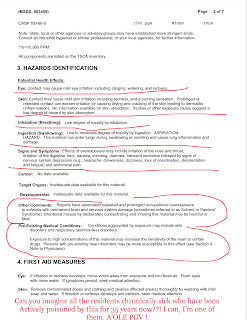Please tell me your kidding right. I’m sorry but come on.
From the ones doing this themselves 👁
IN PLAIN SIGHT .
I’ve gotta get my girl from school.
(Food for thought, family friend John Olson . Who lived by my place bottom Leilani all those decades…. 🔽🔽
Please stay tuned for the MOST IMPORTANT UPDATE YET.
In the meantime it’s VERY IMPORTANT YOU PAY ATTENTION NOW 😭😭😭☢️☢️☢️⚠️⚠️⚠️🆘🆘🆘👁🌋🌋👁👁👁🌈🌈🌈🙏🏻🙏🏻🙏🏻🌊🌊🌊🐺🐺🔥🔥♾♾♾💣🤙🐺🐟🦈🔥❤️🔥🌺🌱💥🧿🌈☢️🌱♾🌋
https://www.manamele.org/hawaii-78
https://lerzpunanewsblog.blogspot.com/2021/10/46-earthquake-pahala-and-many-more.html
I’ve been telling you guys this exact thing was gonna happen since the morning of the eruption BEFORE IT STARTED. Come on now !!! Fuck!!! 😭😭🔥🔥❤️🔥❤️🔥🌋🌋😘🌱🌱🌈🌈🌺🌺🌊🆘🆘⚠️⚠️⚠️☢️☢️☢️☢️
HAWAIIAN VOLCANO OBSERVATORY DAILY UPDATE
U.S. Geological Survey
Wednesday, October 6, 2021, 9:26 AM HST (Wednesday, October 6, 2021, 19:26 UTC)
KILAUEA VOLCANO (VNUM #332010)
19°25'16" N 155°17'13" W, Summit Elevation 4091 ft (1247 m)
Current Volcano Alert Level: WATCH
Current Aviation Color Code: ORANGE
Activity Summary: Kīlauea volcano is erupting. Lava continues to erupt from two vents; one along the floor and one in the western wall of Halemaʻumaʻu crater. As of this morning, October 6, 2021, all lava activity is confined within Halemaʻumaʻu crater in Hawai‘i Volcanoes National Park. Seismicity and volcanic gas emission rates remain elevated.
Summit Observations: Sulfur dioxide (SO2) emission rates remain high, with a measured emission rate of approximately 6,000 tonnes per day on October 5, 2021. Seismicity remains elevated but stable. Summit tiltmeters continue to record deflationary tilt.
Halemaʻumaʻu Lava Lake Observations: Lava continues to erupt from two vents within Halemaʻumaʻu crater. Over the past 24 hours, the lava lake level rose approximately 2 meters (7 ft) with a total rise of about 31 meters (102 ft) since lava emerged on September 29. The total thickness of lava filling Halemaʻumaʻu is now 256 meters (840 ft ) with a lake surface elevation of approximately 774 meters (2539 ft) above sea level. The west vent continues to have the most vigorous fountain with sustained lava fountain heights of about 14–15 meters (49 ft). The lava lake has risen above the base of the vent and the fountain has built a spatter rampart around most of it. Another vent continues to be active in the southern part of the lake with lava fountain heights averaging 3 meters (10 ft). Due to the location of vents, the lava lake is not level across its surface. Areas closer to vents in the west and south part are about 1–2 m (3–7 ft) higher in elevation compared to the north and east end of the lava lake. Crustal foundering, a process by which cooled lava crust on the lake surface sinks into the hot underlying lake lava, is observed on the active surface of the lava lake. The active lava lake surface is perched 1 meter (3 ft) above a 20-meter-wide (66 ft) ledge that extends outward to the Halemaʻumaʻu crater wall.
East Rift Zone Observations: No unusual activity has been noted in the Kīlauea East Rift Zone. Ground deformation motion suggests that the upper East Rift Zone—between the summit and Puʻuʻōʻo—has been steadily refilling with magma over the past year. SO2 and hydrogen sulfide (H2S) emissions from Puʻuʻōʻō were below instrumental detection levels when last measured on January 7, 2021.
Hazard Analysis: This new eruption at Kīlauea’s summit is occurring within a closed area of Hawai'i Volcanoes National Park. Therefore, high levels of volcanic gas are the primary hazard of concern, as this hazard can have far-reaching effects down-wind. Large amounts of volcanic gas—primarily water vapor (H2O), carbon dioxide (CO2), and sulfur dioxide (SO2)—are continuously released during eruptions of Kīlauea Volcano. As SO2 is released from the summit, it reacts in the atmosphere to create the visible haze known as vog (volcanic smog) that has been observed downwind of Kīlauea. Vog creates the potential for airborne health hazards to residents and visitors, damages agricultural crops and other plants, and affects livestock. For more information on gas hazards at the summit of Kīlauea, please see: https://pubs.er.usgs.gov/publication/fs20173017. Vog information can be found at https://vog.ivhhn.org/.
Additional hazards include Pele's hair and other lightweight volcanic glass fragments from the lava fountains that will fall downwind of the fissure vents and dust the ground within a few hundred meters (yards) of the vent (s). Strong winds may waft lighter particles to greater distances. Residents should minimize exposure to these volcanic particles, which can cause skin and eye irritation.
Other significant hazards also remain around Kīlauea caldera from Halemaʻumaʻu crater wall instability, ground cracking, and rockfalls that can be enhanced by earthquakes within the area closed to the public. This underscores the extremely hazardous nature of Kīlauea caldera rim surrounding Halemaʻumaʻu crater, an area that has been closed to the public since early 2008.
For discussion of Kīlauea hazards, please see: https://www.usgs.gov/observatories/hawaiian-volcano-observatory/hazards
Please see the Hawaiʻi Volcanoes National Park website for visitor information: https://www.nps.gov/havo/index.htm. Visitors to Hawai'i Volcanoes National Park should note that under southerly (non-trade) wind conditions, there is potential for a dusting of powdery to gritty ash composed of volcanic glass and rock fragments. These ashfalls represent a minor hazard, but visitors should be aware that dustings of ash at areas around the Kīlauea summit are possible.
The Hawaiian Volcano Observatory (HVO) continues to closely monitor Kīlauea Volcano.
HVO will continue to issue daily Kīlauea Volcano updates until further notice. Additional messages will be issued as needed.
More Information:
Kīlauea activity summary also available by phone: (808) 967-8862
Kīlauea webcam images: https://www.usgs.gov/volcanoes/kilauea/webcams
Kīlauea photos/video: https://www.usgs.gov/volcanoes/kilauea/photo-video-chronology
Kīlauea lava-flow maps: https://www.usgs.gov/volcanoes/kilauea/maps
Kīlauea FAQs: https://www.usgs.gov/volcanoes/kilauea/faqs
----------
Subscribe to these messages: https://volcanoes.usgs.gov/vns2/
Summary of volcanic hazards from eruptions: https://www.usgs.gov/observatories/hawaiian-volcano-observatory/hazards
Recent earthquakes in Hawaiʻi (map and list): https://www.usgs.gov/observatories/hawaiian-volcano-observatory/earthquakes
Explanation of Volcano Alert Levels and Aviation Color Codes: https://www.usgs.gov/natural-hazards/volcano-hazards/about-alert-levels 😭😭😭😭❤️🔥❤️🔥❤️🔥❤️🔥🔥🔥🔥🔥🌋🌋🌋🌋🌺🌺🌺🌱🌱🌱
Ya girl,
JAZZY
















Comments
Post a Comment